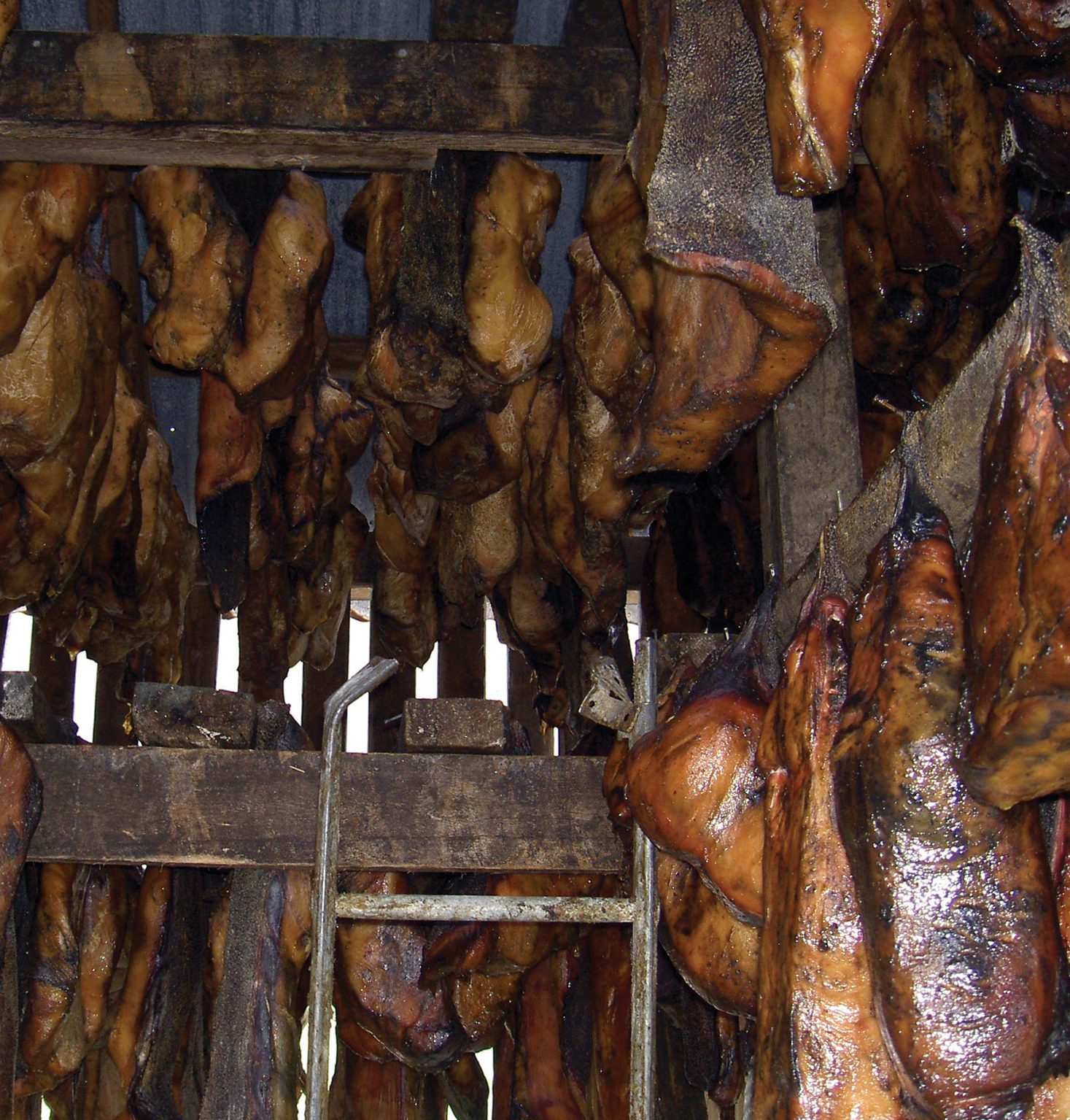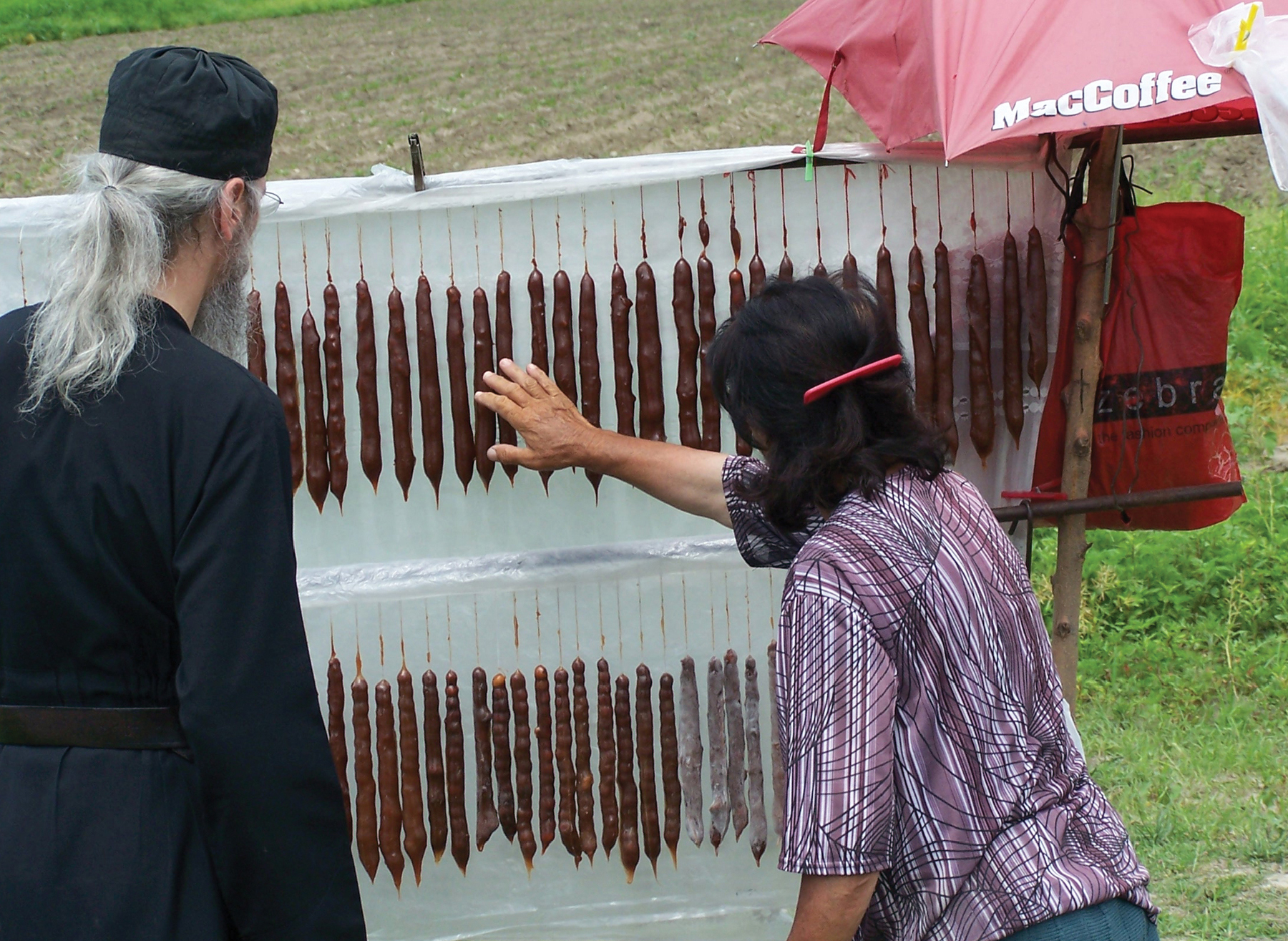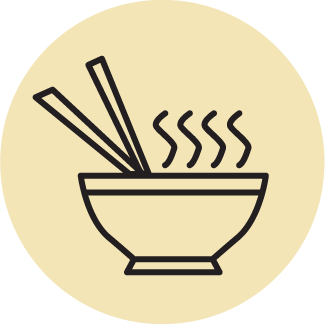
FOOD
World cuisine is best eaten from a street cart. Seek out traditional dishes, avoid the familiar arches and java, and don’t be afraid to wrap your taste buds around the absurd. In our most delicious chapter, you’ll learn how to get down with crêpes in iconic France, Burmese salads, and pizza in Italy. We threw a few chicken fetuses (Vietnam), sheep’s heads (Iceland), and fried ants (Chiapas, Mexico) into the mix as a crunchy top layer of food exploration fun. Your stomach may be angry with you when all is said and eaten, but sampling authentic local food is a great way to dive into local culture, mouth-first.

 BURMA
BURMA
BURMA LOVE
Burma (also known as Myanmar) is home to an array of dishes influenced by surrounding cuisines. Where the rest of the world just dresses their salad with vinegar, oil, or a creamy concoction of some sort, Burma throws on fermented tea leaves and lemon to create a tasty adventure like no other. A combo of flavors, Burmese food is kind of like Indian food with Asian preparations, and it will make your mouth feel the love in this eclectic country.
DOSA
These pancakes should be familiar to you if you’ve ever indulged in Indian cuisines. Dosas here are called “kauk mote” or “folded snacks.” In Yangon—the former capital and the nation’s largest city—dosas are the most popular street side snack and come in both savory and sweet varieties. On the savory spectrum, you can get the Indian flavors you’re used to (filled with potatoes and served with chutneys) or go for a more real-Burmese deal with shredded carrots and cabbage, bean sprouts, beans, and tomatoes. On the sweet side, dosas here are also filled with palm sugar and shredded coconut.
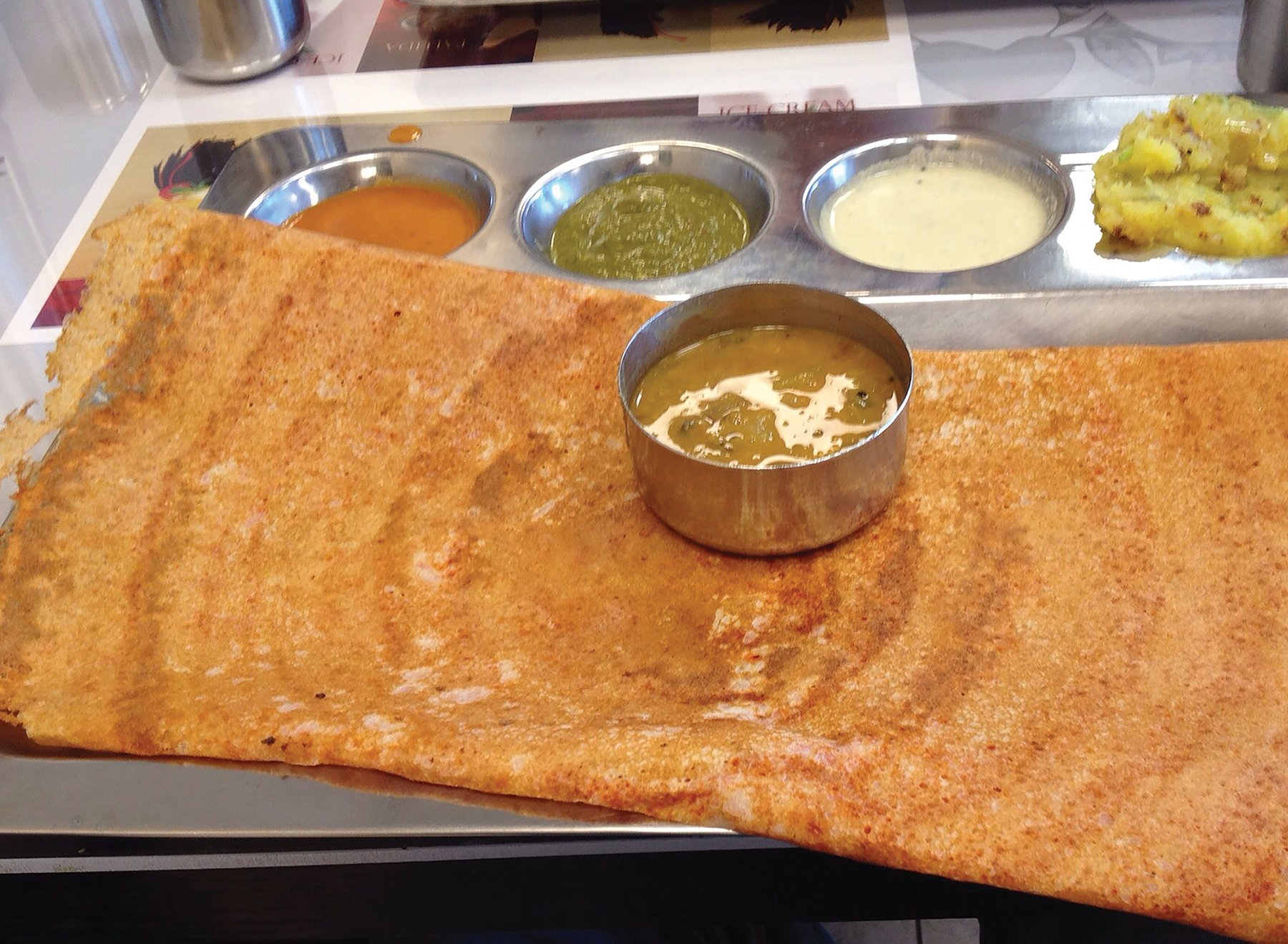
SALADS
Salads are salads, unless you are in Burma, where salad takes on a whole new flavor that’ll shock your taste buds into submission. Burma is known for turning a seemingly bland romaine-based salad into something spectacular with a fermented black tea dressing, a handful of crunchy additions like fried garlic and dried shrimp, crunchy beans, and a generous spritz of lemon. Along with the popular tea leaf salad, many noodle-based and fish-sauce spiced salad varieties exist in Burma. It makes zero sense for these salads to taste good but holy shit, they’ll put a spell on you.
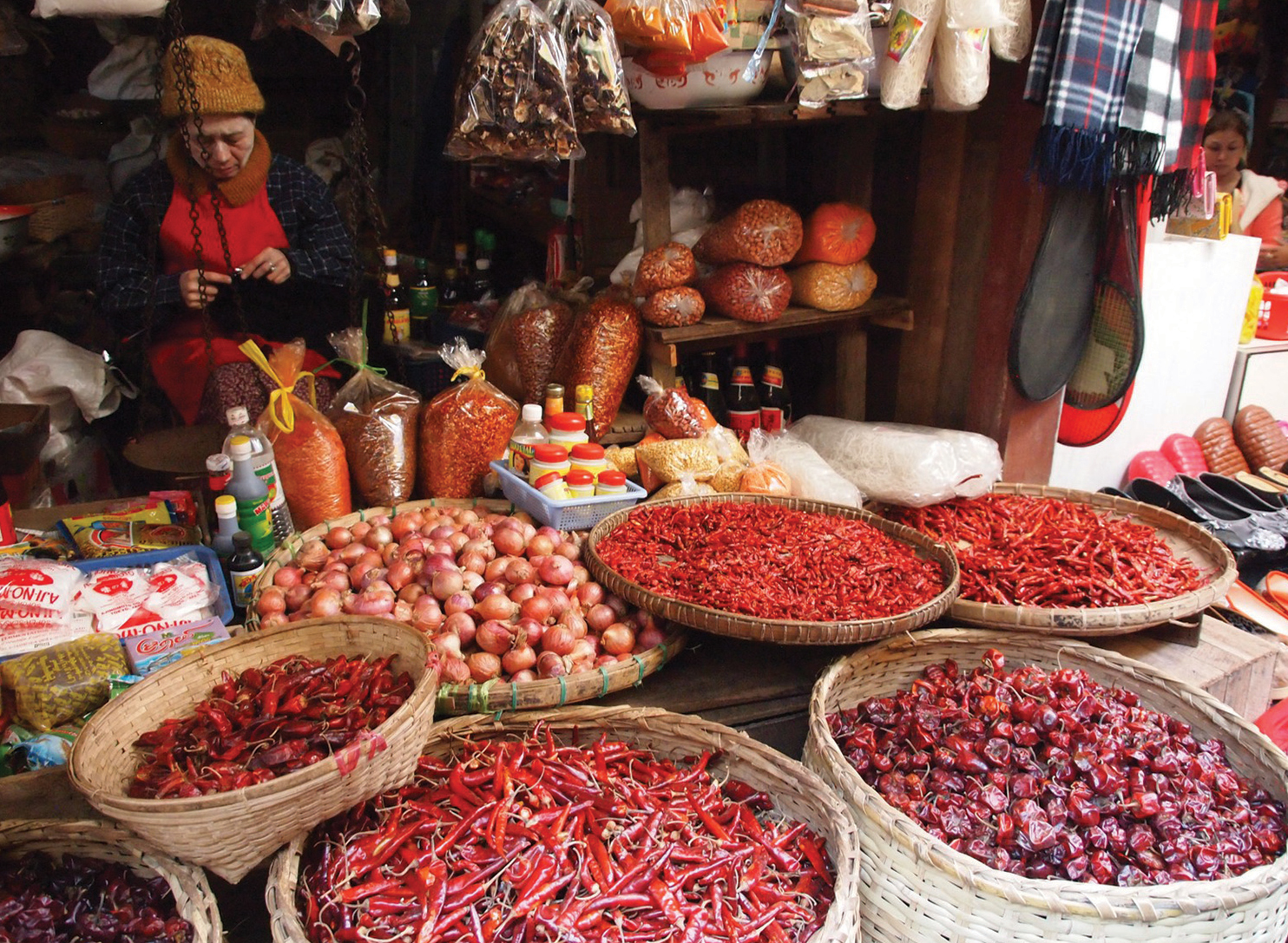
FISH
Burma doesn’t fuck with fillets! These people grill that sucker whole and spice it up so nice it’ll make you want to have dinner twice. Called nga kin, the traditional recipe for whole grilled fish calls for a whole fish stuffed with a mixture of herbs, chilies, and salt, which is then charred and served with a tamarind dipping sauce. Beer is the drink of choice here and pairing local brews with a whole fish is the ticket to Burmese paradise.

OTP Tip: Mohinga is a staple which consists of rice noodles swimming in fish stew and topped with crispy fried onions. Sound like a good lunch or dinner? Well, too bad, because this national dish is consumed for breakfast. Step up to fish in the morning like a champion.
SKEWERS
Burma loves to stick sticks into chunks of food, from veggies to pork, and fire it up on the barbie. Here, nothing is off-limits. Skewered pig livers, lungs, intestines, ears, and testicles are up for grabs and are often served street-side with hot soup and dipping sauce (made of chili, tomato, and ginger).
CURRY
We won’t hesitate to claim that everyone loves curry. Burma’s version lacks the coconut milk most Southeast Asian curries feature and instead utilizes fresh onion for body, a whole lot of oil, and a fermented fish paste (called ngapi) that gives the curry an umami flavor.
SWEETS
Dessert here is heavy on the jellies, dense cakes, and fruit, particularly bananas. Popular sweets include a funnel cake–like concoction called gyalebi, kauknyintok (banana steamed in banana leaf with coconut cream and sesame seeds), hpa luda (a parfait featuring rose water, milk, jello, and coconut shavings), and mote lone yay paw (or “teething cake”) a floury sweet prepared in celebration of a baby’s first tooth.
OTP Tip: Jaggery are sugar chunks that have a maple-like flavor and are excellent in tea.
 CHIAPAS
CHIAPAS
NOT A TACO BELL IN SIGHT
Way more than the bastardized burritos and nachos you pick up at window #2, Mexican food is such a big deal, the cuisine was named by UNESCO as an intangible cultural heritage of mankind. Spicy, tangy, and full of rich soul, the Chiapas region is also the cheapest in all of Mexico, making all its edibles available to you at street-food prices.
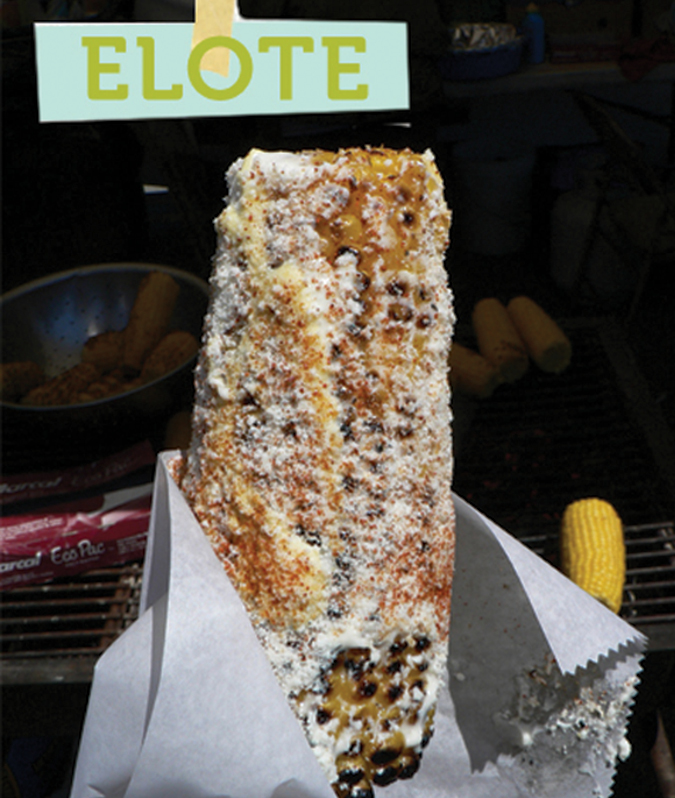
ELOTE
In Chiapas, it all starts with corn, a sacred crop deeply embedded in Mayan culture and considered a gift from the gods. Elote (corn on the cob) is a major street food and is usually grilled, then superslathered in mayo. To layer flavor on your natural stick of Mexican food history, other topping options include chile powder, butter, salt, grated cotija cheese, salsa picante, and lemon or lime juice. If picking corn out of your teeth on the streets gets grueling, check out elote’s loose cousin, esquites, an off-the-cob version served in a bowl with a mixture of the above ingredients and eaten with a spoon.
OTP Tip: Add some corn to your corn by chugging down pozol, a drink made of corn dough and water (pozol blanco), or mixed with cacao (pozol de cacao), and popular during Mayan ceremonies where it was believed to help the indígenas make long journeys through the jungle. When your corn baby fully matures, flush and don’t look down.
NUCÚ
Why yes, those are curled up ant legs on your plate. A Chiapas specialty, nucú (a.k.a. chicatana) are essentially oversize queen ants filled with thousands of eggs. They’re usually roasted and salted, served with lime juice and chile powder, and sometimes sprinkled on tacos (if you like an extra crunch). Nucú mate in swarm-orgies every June, after which all the males die, leaving bloated females to sit around until dinnertime. Best to take off their head and direct your bite straight at their fat asses.

LENGUA
If your own tongue just ain’t cutting it anymore, lengua is your mouth’s chance to get real personal with beef tongue. Rubbing taste buds with a cow may sound like twisted bestiality, but the meat is chewy, with a dense, smooth texture and a not-half-bad taste. You can find a lickin’ in burritos and tacos, or on its own with a sauce. Try it with saffron sauce (lengua en salsa de azafran) to make you, and your new beefy friend, salivate.
TACOS
Instead of giving you our gringo taco banter, while in Chiapas, OTP was lucky enough to meet Jesús Catalán, the self-proclaimed “Taco King,” and he’s better equipped to give you the deep insider view of Mexico’s favorite sandwich. Catalán is legit: Born in Del Valle, the taco epicenter of Mexico City, he has consumed millions of tacos around the world and, after seventeen years, still holds the record for eating the most street-style tacos de canasta (sixty-three of those bad boys!) in a single sitting.
So, what makes a good taco? Catalán says it’s all about “tortillas, beans, chile, the fresh ingredients of a salsa, and the essential squeeze of lime.” He’s willing to get on an airplane for his Chiapan taco fix. At puestos (DIY taco joints) at the shore of Lago Pojol in El Parque Nacional Lagunas de Montebello, “… you’ll find homemade fresh cheese wrapped in banana leaves, that will be grilled and topped with black beans, fried chorizo, and avocado slices. Ask for tortillas and make tacos, those are really authentic.” Catalán swears that, “God is a taquero, life is a puesto, love is the salsa, and you are the taco.” To Catalán, tacos in Chiapas are a big deal, and he’s ready to wage war on anyone trying to mess with his favorite street eats. In fact, he “… dare[s] anyone with a passion for tacos to bring it on and try to steal [his] crown.” You hear that? Be the taco.
TAMALES
These are not your freezer section logs of awful. Chiapas’ nutty version, called tamales chiapanecos, are a regional creation. They come wrapped in banana leaves and filled with pork, raisins, tomatoes, almonds, onions, and spicy herbs. The dough contains chipilín, an herb native to Chiapas that gives these tamales a little extra flair. Purchase yours from any guy peddling them from his bike.
Superagriculturalists since before America was “born,” you best believe the people of Chiapas know their shit when it comes to food. The Taco King will tell you: “In such a diverse country as Mexico, food is perhaps the strongest element that ‘glues’ us all. Old and young, rich and poor, religious or not.” Combine that with the “mi casa es su casa” mentality of the region, and you got yourself a street feast worth a trip way south of the border.
 FRANCE
FRANCE
CRÊPE YOUR PANTS
French food gives us a boner appétit. From their locally grown food picked fresh from their diverse landscapes, to their willingness to eat anything and everything, the French are true chefs who make everyone else look like lowly line cooks. Even back in the Middle Ages, when royalty from neighboring countries wanted a special feast, they ordered out from France, in what was probably the slowest delivery service ever. Crêpes are the centerpiece of French cuisine and can be eaten anywhere, at any time, and on any budget.
THE SKINNY ON CRÊPES
Crêpes are pretty simple—pour a thin layer of batter on a skillet and cook until it’s like a giant, ultrathin pancake. Then throw whatever ingredients you want on top and wrap it up.
SWEET CRÊPES
Superthin, white sheets of lightly sweetened wheat flour are stuffed with fruit, jam, or any sort of sugary filling or spread. Nutella—a hazelnut spread that, in the rest of the world, has made peanut butter its bitch—is a favorite. Go sweet for breakfast, dessert, or some post-toke munchies.
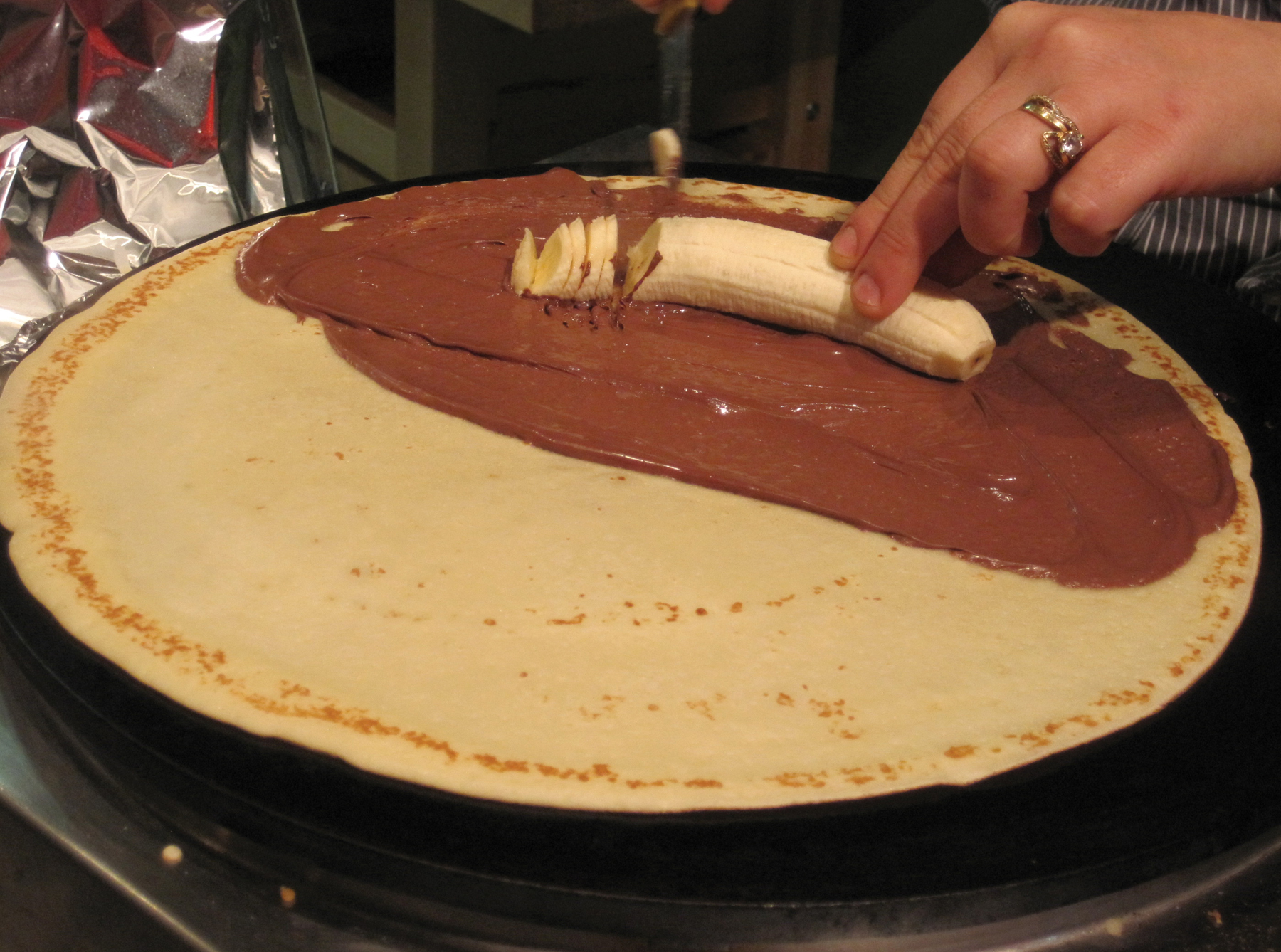
SAVORY GALETTES
A “dark meat” variation, galettes are made with unsweetened, darker buckwheat batter and filled with anything from veggies and cheese to beef burgundy for a cheap lunch or dinner. Smelly French cheese melted all over earthy mushrooms is a great way to go.
ALL CRÊPE-D OUT
Throw ice cream on it, and you have crêpe à la mode. Set Grand Marnier on fire, pour it on top, and you have crêpe suzette. Roll it up like a cigar, bake it, and have it with afternoon tea for crêpe dentelle. Stack a dozen crêpes on top of one another with filling in between each, and you have a mille crêpe cake. And in traditional French fashion, be sure you wash it all down with some alcoholic cider.
CREEP UP ON CRÊPES
Crêpes are the food of choice for poor Parisians, so crêperies are as prevalent as topless ladies on a French beach. Find them near the starving artists in Montmartre and broke college students in the Latin Quarter. The best spot to get crêpes, though, is their birthplace in Brittany, France. When crêpe chefs from that area traveled to Paris, they set up shop just outside the Montparnasse train station, where they still whip up the best crêpes in town.

 HAMBURG
HAMBURG
VEGGIN’ OUT
While the term “hamburger” was born here, eating zero meat in Germany’s second-largest city isn’t as hard as you’d think. Despite its sausage-filled food history, Germany is trending toward plants, and whether you’re hanging with a beer street-side, sipping a brew at a restaurant, or chugging it down with your Airbnb host, finding complementary food is a piece of vegan (German Chocolate) cake.
STREET-SIDE
You want your all vegan food truck with a little Men in Black flare? Meet Vincent Vegan, or vegan badassery on wheels. This mobile vegan food dispensary serves up currywurst, cheesy beef burgers (made with seitan and tofu), and fries (regular or sweet) with dips like redchup, vayonaise, and (super popular) garlicky turmeric. The truck started as a passion project in 2014 that brought together a collective of fourteen members from different walks of life. If it’s greasy (but not animal fat-laden) comfort food you’re after, Vincent’s got the street-side hook up.
SAVOR
For sit-down options, the Vegan Eagle is ground zero. They have your veggie burgers and bowls of whatever veg, but take it up a notch with curries, bean-packed chili, and desserts like apple crumbles and brownies. Plus beer—so much beer. The Leaf—with an ambiance created by creaky wooden tables and bright windows—is also a local favorite that serves traditional (but veganized) German fare plus international dishes like Indian pistachio coconut milk rice and meatballs and lasagna with braised radicchio. If you’ve piggy-banked some euros, spend them at Aloha Cherie, a Mediterranean-inspired German fusion joint with perfect sunny-day outdoor seating.
SIP
Almond milk in your coffee and vegan pastries on display, Hamburg’s got you covered when it comes to your caffeinating needs. Cafés around town sport the latest in vegan fare, including nut milk options, full-on vegan brunches, and cakes that leave out the dairy without compromising on flavor. Kaffeeklappe is an out-of-the-way café in Elbe that has your coffee, cake, quirk, and dirt-cheap vegan breakfast.
OTP Tip: Kumpir (baked potatoes) are acommon street food that can easily be veganized if you ask for no kase (cheese) or sauerrahm (sour cream).
SHOP
With nine locations across Europe, Veganz is an all-vegan supermarket that first opened its doors to vegheads in 2011 and carries 6,000 vegan products from 200 international suppliers. While you’ll find a bunch of amazing grocery stores around town, Veganz is top-notch when you’re looking for nothing but vegan groceries. Here, you’ll find strange meat and dairy alternatives, but also raw desserts, a dedicated bistro, and a cantina serving juice, smoothies, and coffee. Additionally, markets like Alnatura, Kaufmannslauden, and denn’s Biomarkt are great suppliers of good vegan goods.
OTP Tip: If you fall in love with Veganz, you can literally date the market as it offers movie nights, cooking classes, and frequent workshops.
 ICELAND
ICELAND
SURF AND TURF WITH WINGS
The lobster, steak, and chicken platter in Iceland is a little different. Their “surf” is bigger, their “turf” is badder, and their “wings” are international icons. Living in a fairly remote island nation, Icelanders have historically eaten some weird-ass shit to sustain themselves. Here are three pickings to shock your palette.
SURF
Whale: The Other Red Meat
A beached whale is normally a sad scene. You think about Free Willy and wonder how the world can be so cruel, tossing this majestic being out of its waters to perish on the hot shore. While you play out the sob story in your head, Icelanders come a runnin’ with forks and knives. The Minke whale is popular in Icelandic cuisine and, while it’s usually served grilled or on a skewer, can be fancied-up and eaten sashimi-style.
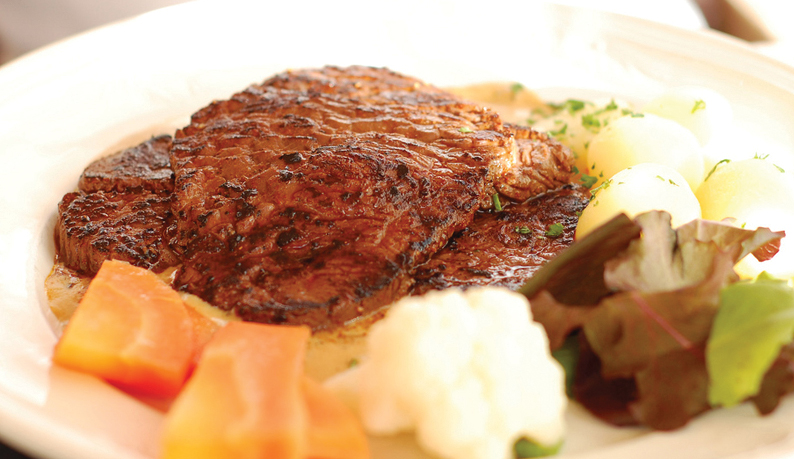
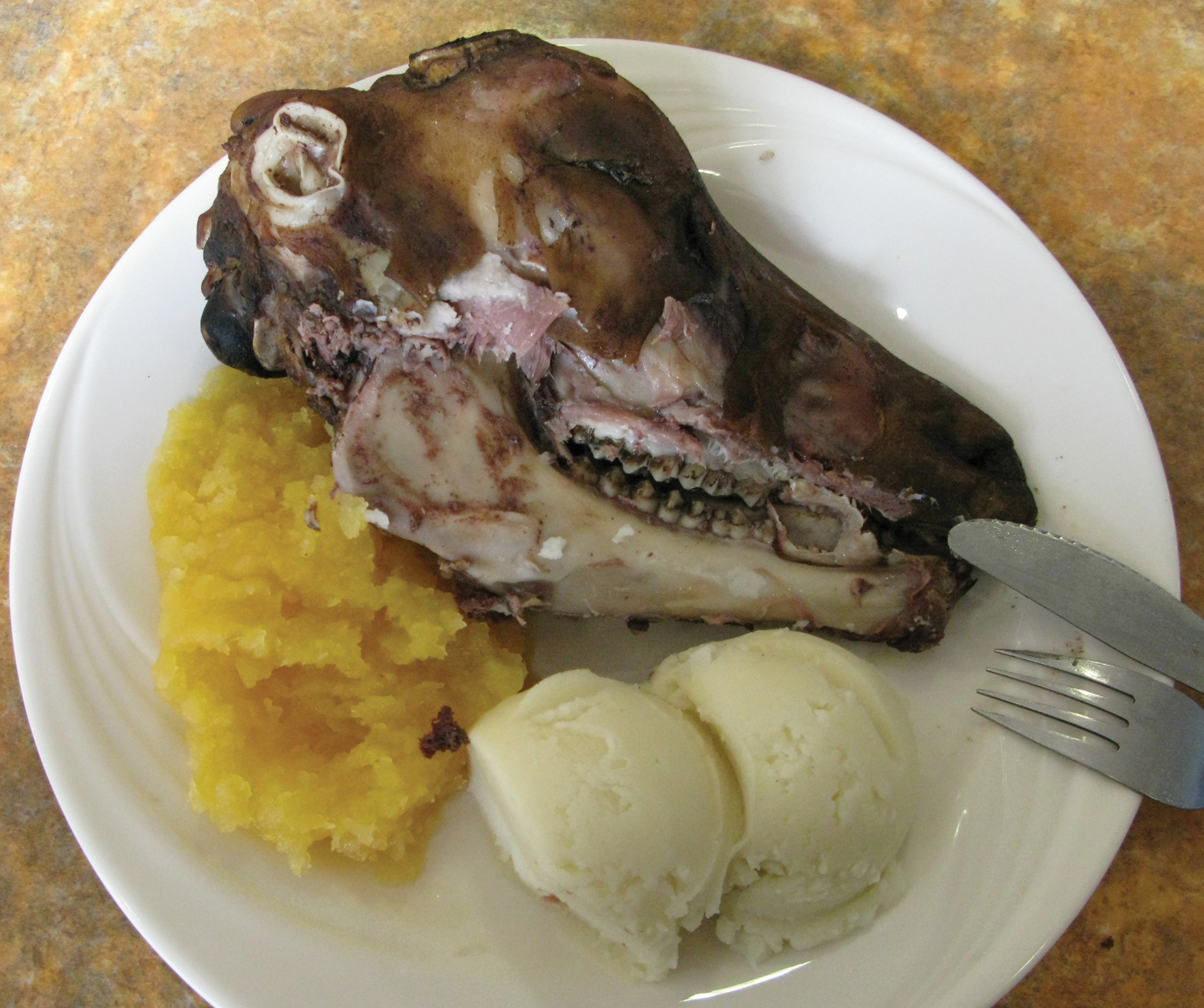
TURF
Deep in Sheep
Forget your chef’s knife; to prepare svið, you’ll need a saw. This traditional Icelandic dish is prepared by first singeing off all remaining fur on a sheep’s head, sawing it in half through the brains and down the jaw, then tossing the sucker with some salt, and throwing it in a pot to slow simmer. All kinds of interesting superstitions exist around eating the various parts of the head. For instance, if the bone found under the tongue stays intact, a local baby will never learn to speak. The eyeballs are said to be finger-lickin’ good. Normally served with much tamer sides (like mashed potatoes), this turf fare is available at both cheap eats and high-end restaurants.
WINGS
Puffins
Gracing the covers of cereal boxes everywhere, chubby, penguin-like puffins are native to Iceland. You may have crunched down on their carb-y breakfast products, but Icelanders used to eat the real deal until the lovable bird population steeply declined. You may find some off-the-books puffin dishes flapping around the outskirts of the island, but for the most part, these birds are now reserved for picture-taking and not devouring.
 ISTANBUL
ISTANBUL
BREAKING THE FAST
During the Islamic holy month of Ramadan (Ramazan in Turkish), most religious followers fast from sun-up until sunset each day. A hypoglycemic’s nightmare, fasting for Ramazan means that no food, drink, smoke, or even chewing gum can touch your lips during the daylight hours for thirty straight days. After going without food all day, the Turks are ready to chow by nightfall and Istanbul becomes one big raging dinner party, where people eat feverishly in preparation for the next day’s empty stomach grumbles.
STARVING FOR A CAUSE
Each year Ramadan falls on the ninth month of the Islamic calendar. The Islamic calendar is based on moon cycles and only has 354 days, so the month of fasting moves back eleven days each year—beginning with the new moon. In the Quran, Allah states that all Muslims must fast during Ramadan as a way to make a personal sacrifice, reflect on living a life of virtue, and enter the New Year with greater spiritual purity. Fasting is considered one of the five pillars of Islam and all adult Muslims past puberty must practice the act of not eating. Hardcore followers also abstain from sex until they break the fast, compounding hunger and blue ball pangs into one, giant miserable feeling.
IFTAR: BREAK FAST OF CHAMPIONS
When the sun goes down, hungry Turks cure the pangs with a light meal known as iftar. Traditionally, the iftar meal begins with eating three dates followed by fresh pide bread, soup, pickled veggies, and olives. Nowadays, the iftar meal has turned into a hip affair throughout Istanbul, with one man trying to out-iftar the next in lavish displays of food and entertainment. Iftar tables are set up on many streets in every district of the city, hosting as many as 5,000 hungry people at a time and providing entertainment each night ranging from whirling dervish shows to poetry readings. In Sultanahmet Square, breaking the fast is celebrated each evening with traditional Turkish foods, tea, nargile (hookah) smoking, music, and candy-consuming. Wandering around the square is like putting yourself in a sensory wonderland—everything is delicious, filling and incredibly overwhelming.
LOUD, LATE NIGHT SNACKING
Your handful of midnight cookies pales in comparison to the kind of late-night snacking happening in these parts. Sahur is the big meal that is prepared and eaten in the middle of the night before sunrise. Around 2:30 a.m., drummers circle through the streets banging loud enough to get the whole city up and cookin’. The sahur meal usually begins with meat and a vegetable dish, followed by a pilaf or noodle dish and tied together with börek, thin, phyllo-like dough that’s stuffed with a number of both sweet and savory fillings.
HERSHEY’S AND KISSES
When Ramadan ends, the good times of Ramadan Bayram (also known as the sugar/candy feast) begin. In Turkey, Ramadan Bayram is like a three-day Halloween celebration, sans costumes, when kids go door-to-door screaming “Happy Bayram!” and are rewarded with candy, baklava (sweet, Turkish pastry), and sometimes money. The most important practice of Bayram, aside from OD-ing on sugar, is honoring the elderly. Being sweet to those older than yourself is observed by a ritual of kissing the right hand of elderly people and then placing the same hand on your forehead while uttering Bayram well wishes.
Should you choose to keep regular eating hours, don’t be an insensitive prick and flaunt your food in front of fasters during Ramadan. Respect those that are saving themselves until the sun goes down and eat your meals inside a restaurant, café, or hoarder-style on the bottom bunk under the hostel blankets.
 ITALY
ITALY
FOOD FIGHT—NORTH VS. SOUTH
Way before hipsters and food evangelists cornered the term “locavore,” Italians were munching on food picked from their yard, slaughtered in their kitchen, and caught at the bubbling streams they could see from their windows. The best food in the north or south is generally what grows well in the micro-climate of that region. Italians like to keep their sons (cough)—mama’s boys—(cough) and their food close to home. Northern Italy borders Switzerland, Austria, and France, so food there has more French and German influences than in the south, which is warmer and surrounded by the sea. As such, asking a northern Italian for lasagna (a southern dish) should elicit some unpleasant hand gestures. Read up on the great food divide so you can food slut your way around Italy without any nasty bumps.
DIRTY SOUTH
If your privates get public when you think about pizza and pasta, head down to the south, where their giant, juicy tomatoes make the Catholic schoolgirls blush. If you’re gonna bust buttons on one city’s streets, let it be Naples. More than anywhere else in Italy, Naples will pound you proper with its sweet dough and cheese. After tearing into a pizza at a standby, like L’Antica Pizzeria da Michele, make your sweet tooth ache at the many kiosks and tiny open-storefront bakeries. Get good and creamed with zeppoli (deep-fried dough balls, often filled with sweetened ricotta, pastry cream, or custard) and sfogliatelle (crunchy, pleated shell-shaped pastries usually filled with sweet ricotta).
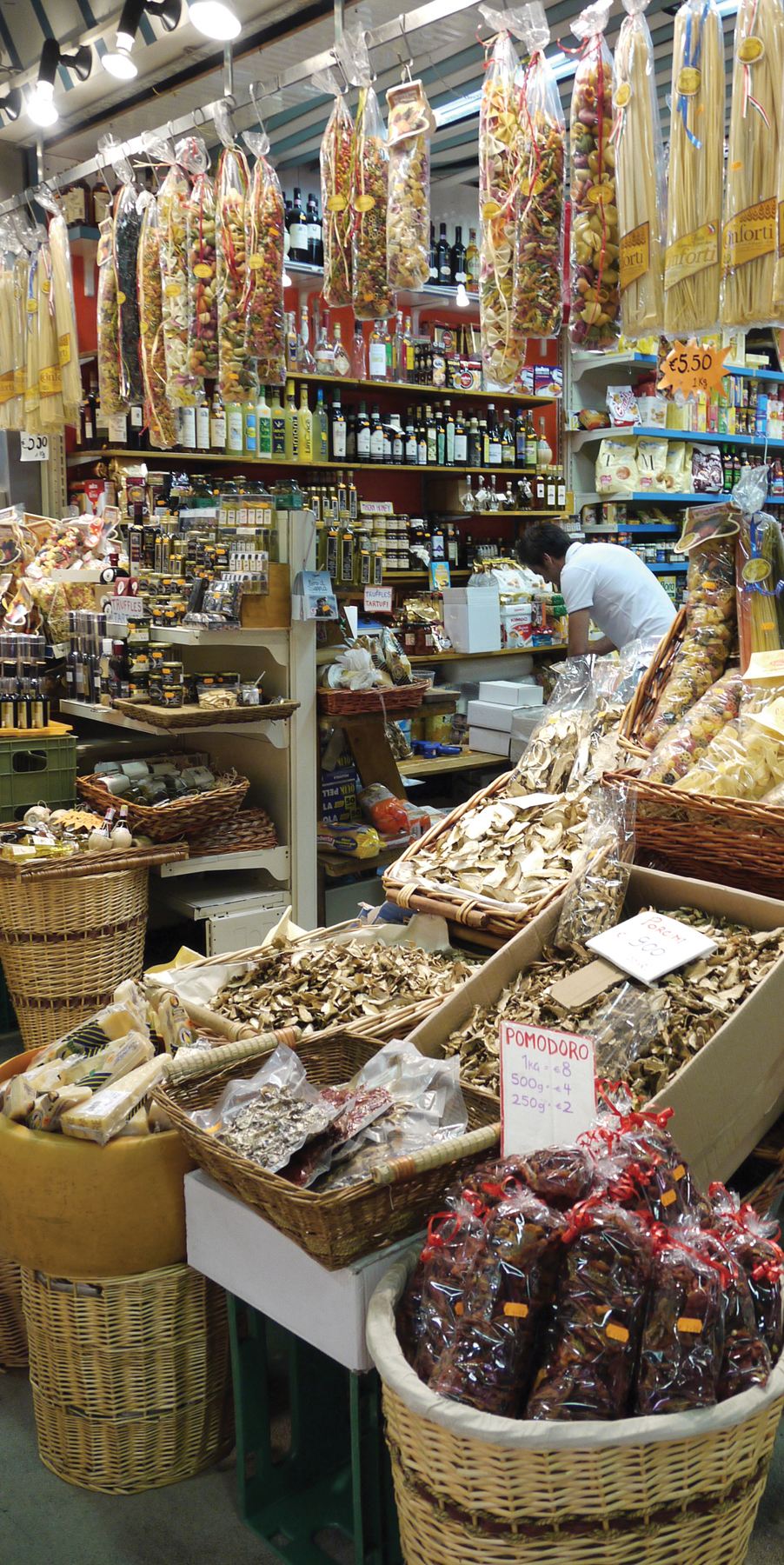
NAUGHTY NORTH
If you dig cooler temps, cabbage and kale, and some blue-eyed blond(e)s with your Italian food, head up north, where the government isn’t fucked up, and food is less likely to put you in a carb coma. In Venice, all that creeping around on canals has given the locals a taste for funked-out fish. Baccalà mantecato is salted, sometimes dried, creamed cod. Venetians pile into cramped osterie (quick, casual restaurants) or bàcari (wine bars, often with snacks), where there’s just enough room for cicheti (appetizers). Served on toasty crostini, baccalà is a no-mayo-doused tuna fish sandwich. The cream is just the fish, pulverized and whipped into salty sub-mission.
The Florentines, on the other hand, have been straight tripping since the fifteenth century, when peasants started getting down with all four cow stomachs. You’ll know you’re turning Italiano when you’ve acquired a taste for tripe—essentially, cattle stomach lining, which tastes just as rubbery as it sounds. If cow guts aren’t your thing, chow down on ribollita, a black cabbage, root vegetable, and white bean soup that tastes like it’s been blessed by the pope.
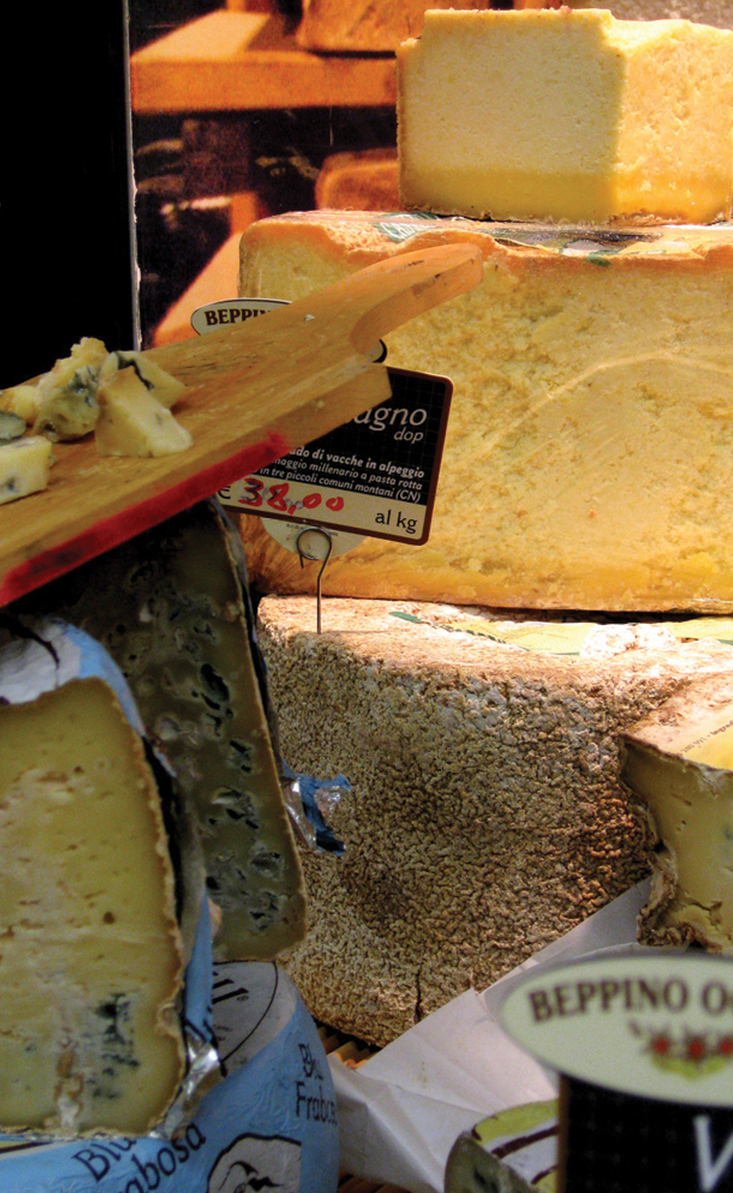
PEACE WITH CHEESE
No discussion on Italian food would be complete without the lowdown on cheese. Ask the locals where to find the best cheese, and they’ll respond, “che il formaggio (which cheese)?” If you’re Italian, the world would end if your mozzarella came from the same city as your parmigiano-reggiano—the north and south produce two seriously different formaggio. The best mozzarella di bufala is from the southern Campania region, and the best parmigiano is—wait for it—in Parma (up north).
Italians get a little Godfather-y if you’re ignorant about the food culture, so unless you want to find yourself dragged under a gondola or buried five-feet-deep in a Sicilian graveyard, we suggest you stop yapping and start swallowing that salami.
 GEORGIA
GEORGIA
HOW TO EAT YOUR WEIGHT IN BREAD
There’s nothing Georgia-peachy about the street food in this former part of the Soviet Union. The Republic of Georgia has spent some seventy years cut off from the rest of the world, eating bread and cheese in every combination possible. Pick up all the delicious crumbs behind the Iron Curtain and bloat yourself into oblivion on the republic’s kick-ass street cuisine.
KHACHAPURI
Bread and cheese: those two crazy kids go together like awesome and sauce. Georgians peddle this cheesy bread heaven—called khachapuri—across the country. The versions range from cheese-stuffed to cheese-topped and from flaky to über-bready. In the beach town of Batumi, things really get out of control with a boat-shaped variety filled with egg, butter, cheese, and more cheese. Forget Italians and Mexicans, Georgians are the iron chefs of artery-clogging.
TONIS PURI
Paleo freaks may as well jump off one of the country’s massive mountain ranges if they plan to avoid bread in the ex-Commie country. Locals walking the streets stuffing their faces with fresh tonis puri (kiln bread)are about as common as hookers in Bangkok—and maybe equally as tempting. To get on the carb bandwagon, look for the typical hole-in-the-wall bakeries marked with the word “t’one.” Pronounced “toe-nay,”this means the bakery is equipped with an old-school clay oven that pops out hot bread all day.
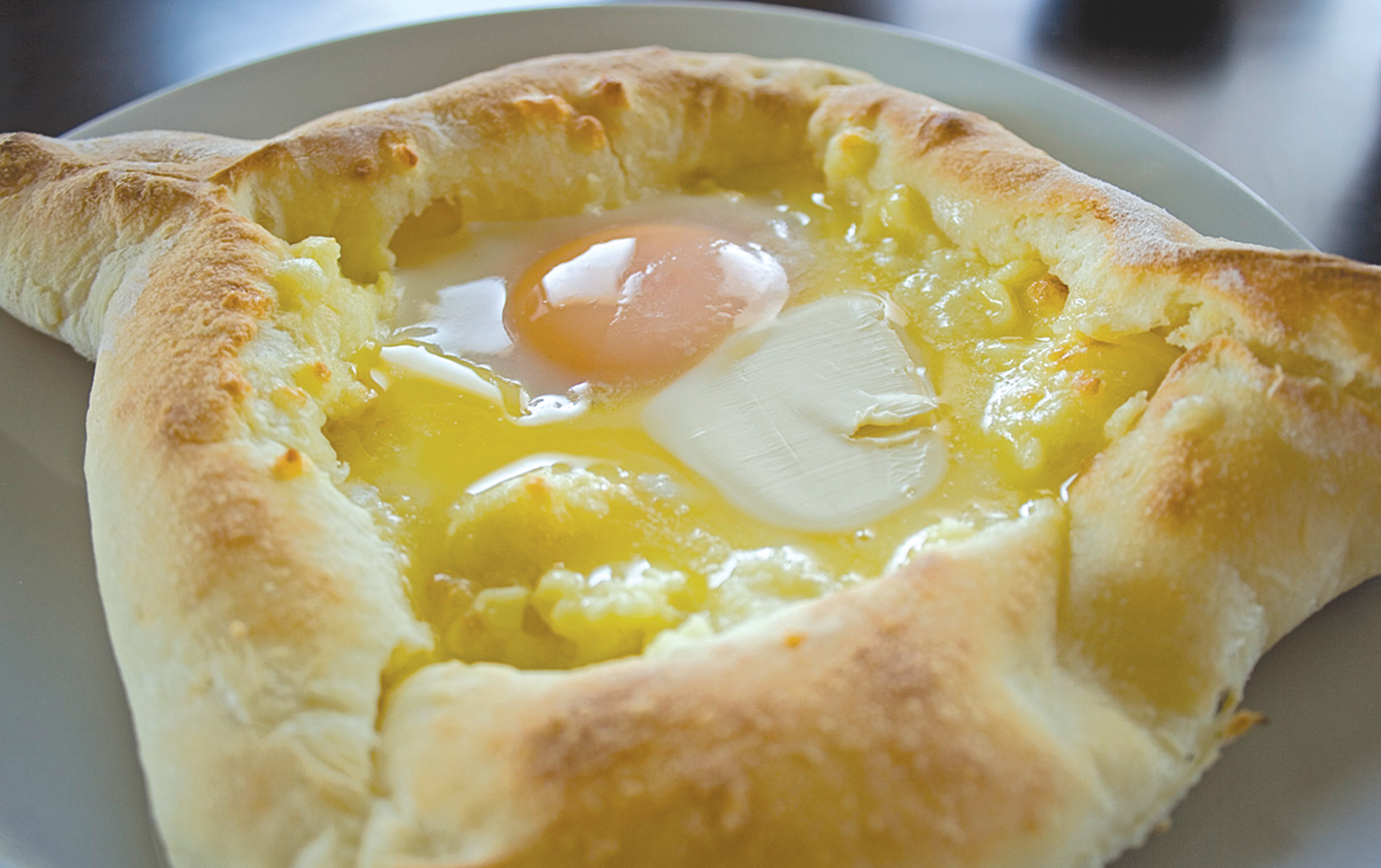
KHINKALI
Save up some cash and splurge on a sit-down meal to try one of the country’s most famous dishes: khinkali. Essentially fatty dim sum, the doughy-pouched dumplings are a spiced-meat-and-oozy-juice party in your mouth. Unlike their Chinese counter-part, these more gigantic versions are served in mass quantities to satisfy even the most raging case of the munchies.
OTP Tip: To eat it like the locals, first slurp up the liquid insides by holding the khinkali by the top and taking a bite from the bottom.
LOBIANI
Just when you thought you could totally live without refried beans, Georgia reignites your gassy passion for the cafeteria slop. The country’s answer to the bean burrito—lobiani—comes stuffed, yet again, in more bread. All that’s missing is some tequila and a side of guac.
KADA
Basically just piecrust coiled up for easy inhaling purposes, this buttery pastry is usually served at stands and bakeries. Expect it to go straight to your ass.
CUT THROUGH THE CARBS WITH KEBAB
Georgia’s version of cheap street food looks like your typical lump of mystery meat but gets its local flare from a mixture of cilantro and unique spices. Down your kebab with a side of tomato sauce called satsebeli. With other meaty dishes, though, opt for tkemali, an herbalicious plum sauce that Georgians equate to ketchup. Eating a kebab is a great way to add a little protein to that monster loaf baking in your stomach.
WINE
If bread is the go-to grub, then wine is the go-to booze—Georgians actually claim they invented it and famously toast endlessly with the homemade, unfiltered concoction, which is a murky yellow in color. While more refined wines exist, the homebrew version is popular at most restaurants.
 VIETNAM
VIETNAM
BANH YOURSELF PHO REALS!
A few years back, Vietnamese cuisine was something only its people and a small handful of food-savvy non-Asians knew much about. Today, it has become one of the trendiest stateside ethnic foods. While any Yelp-user can whip up a list of “authentic” Vietnamese restaurants in Seattle, Santa Ana, or Houston, why not one-up them by hightailing it to the motherland instead?
BANH
Any food item containing the word “banh” means it’s flour-based, and there’s no better way to kick-start the day than with a huge plate of carbs. Out of all the yeasty treats, the most popular is the banh mi, a crispy baguette stuffed with your choice of cold cuts, grilled or roasted pork, pâté, pickled carrots and daikon, cilantro, chili peppers, cucumbers, buttered mayo, eggs, or all of the above.
Another popular banh variety is the banh xeo, a giant savory Vietnamese crêpe packed with fatty pork, shrimp, mint leaves, basil, and bean sprouts, pan-fried over a charcoal burner and topped off with nuoc mam (that delicious, foul-smelling fish sauce). Available at all banh xeo–only restaurants on Tuyen Quang Street (a.k.a. Banh Xeo Street) in Phan Thiet, listen for the loudest sizzles to pick your dispensary.
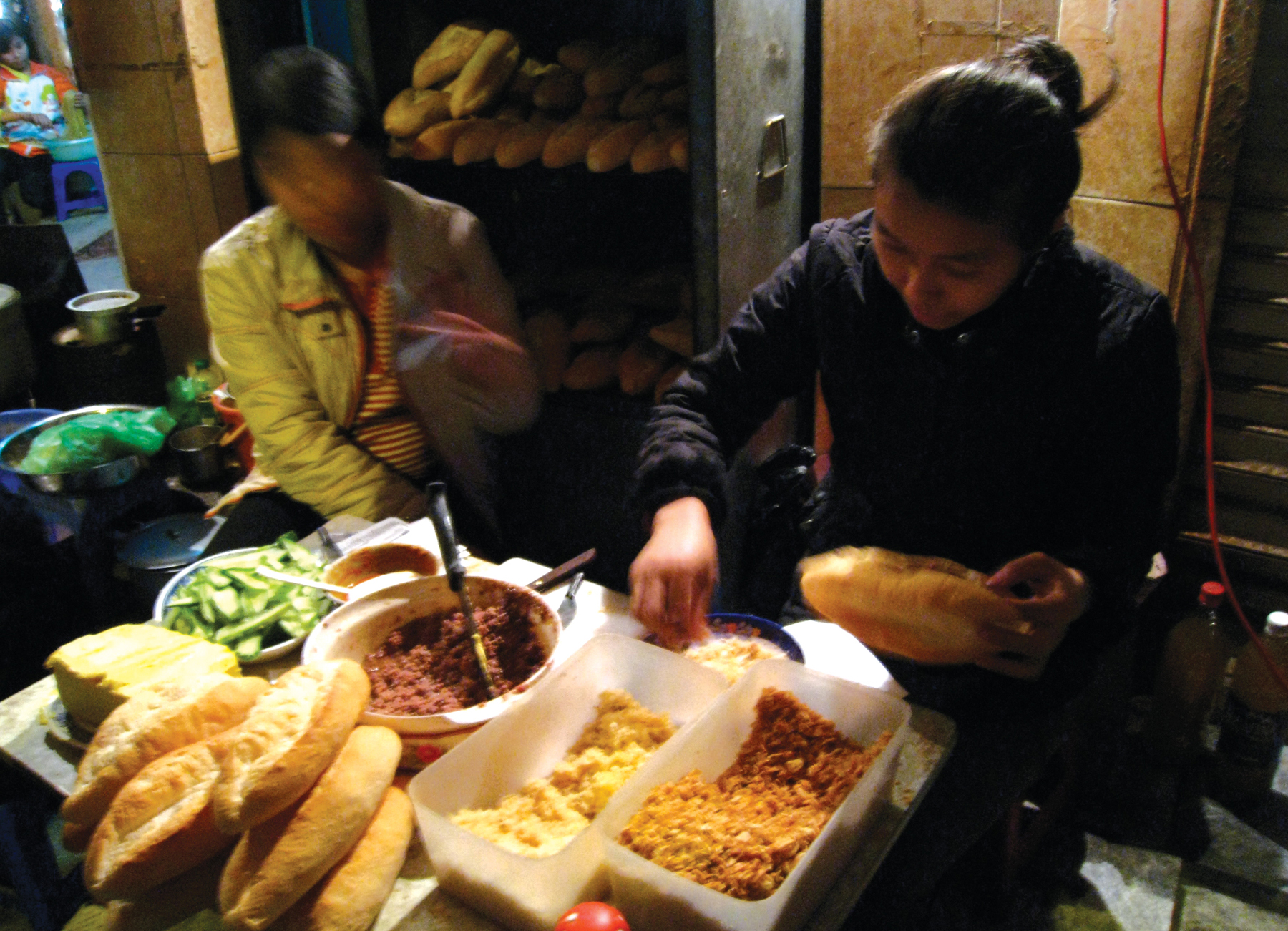

PHO SHO!
Forget that shitty ramen you lived on as a starving college kid. When it comes to noodles, the Vietnamese don’t mess with that Cup-o’-junk. Instead, warm up your spoon for some pho (pronounced “fuh” not “foh”), a steaming-hot bowl of vermicelli noodle soup served with beef or chicken, bean sprouts, basil, and cilantro. Spice it up with some chili peppers, a squirt of lime juice, and Sriracha.
If your broth ends up a bright red from all that Sriracha, congrats! You’ve graduated to bun bo Hue, a spicier, sassier pho variety from central Vietnam. This lemon grass-laden noodle soup comes loaded with marinated beef, sliced cabbage, raw onions, oxtail, pork knuckles, and congealed pig’s blood—if you’re no Bourdain, you can ask them to hold the last two.
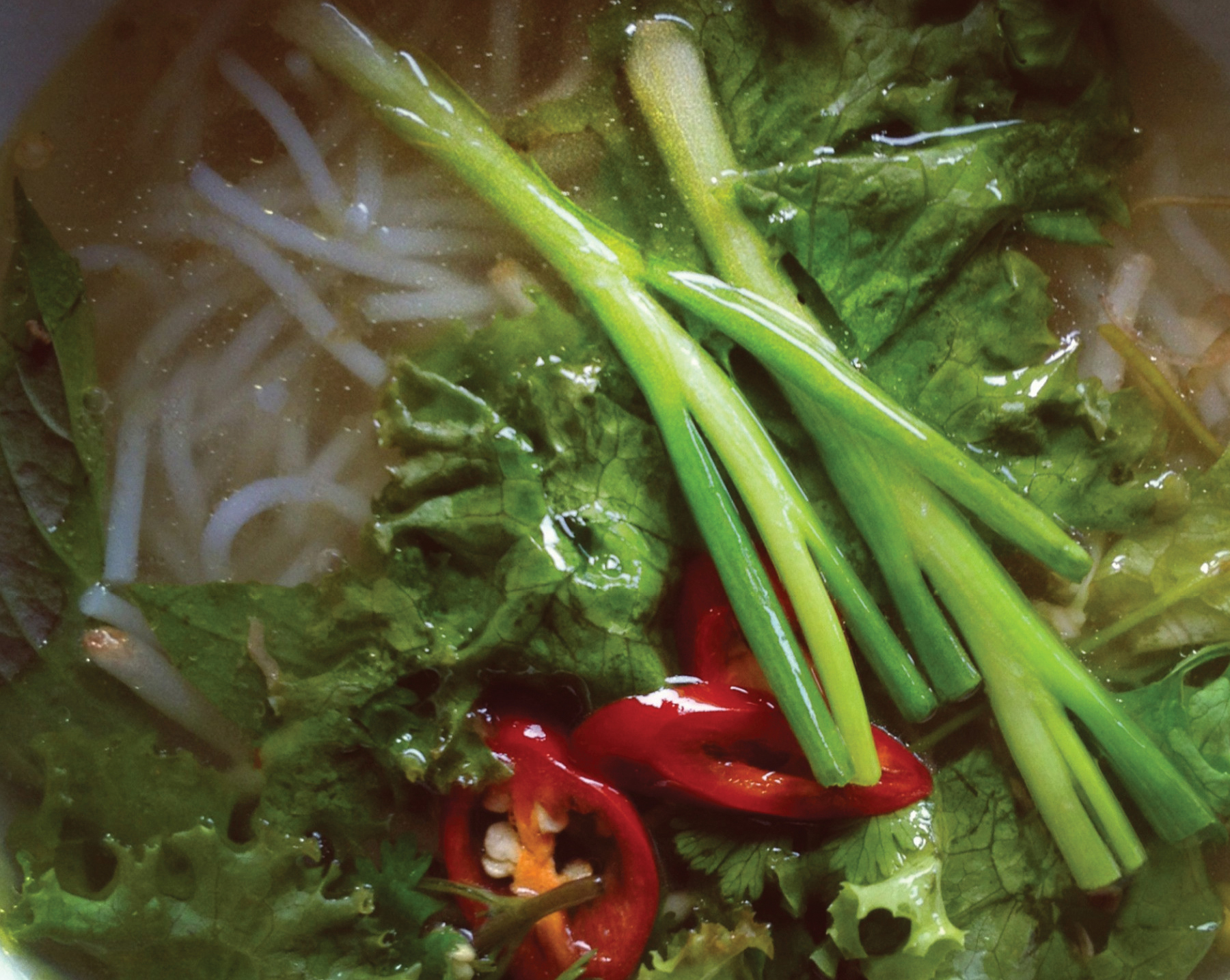
ROLL UP
For a light midday snack, grab some goi cuon, or spring rolls. The main ingredients—pork, shrimp, lettuce, vermicelli noodles, and fresh herbs—are wrapped in delicate rice paper and served in a neat, easy-to-manhandle bundle. Dip it in some peanut hoisin sauce and try to avoid looking vulgar as you shove it in your mouth whole.
SWEETS
Feed your food baby one last time with some che, a dessert beverage or pudding usually made with some variation of fruit, beans, and sticky rice. One of the most commonly consumed is che sam bo luong, a sweet, cold soup made with lotus seeds, sliced seaweed, red jujubes, dried longans, Job’s tears (a grain native to Southeast Asia), and crushed ice.
FINISH OFF WITH A COLD ONE
Vietnamese people aren’t big drinkers in general (damn that Asian red-face-inducing, lack-of-alcohol-digestion-gene!), but they still know how to enjoy a drink or two. Each region has a local draft beer named after it (Bia Saigon, Bia Can Tho, etc.), and deciding which one’s best comes down to the drinker’s own taste. If price outweighs taste, the cheapest beer in the land is Bia Hoi, at under twenty-five cents a pint.



